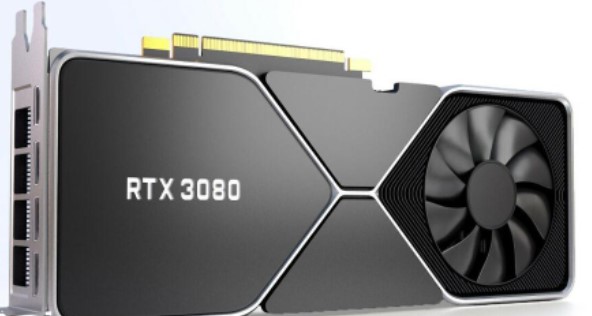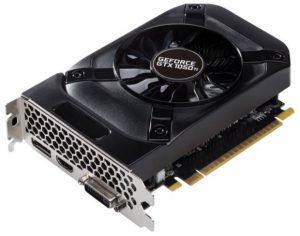
Nvidia GeForce GTX 1050 Ti review: satisfactory for playing in Full HD
Spesification
- Chip GP107
- GPU frequency 1291 MHz
- Memory quantity 4GB
- GDDR5 Memory type
- Memory frequency 1752 MHz
- Heat sink NC
Nvidia continues to roll out its GeForce GTX 10 line of graphics cards, based on the Pascal architecture. After attacking on the high end and then the midrange, the company is now aimed at gamers who are keen on spending the minimum to play. The GeForce GTX 1050 Ti also inaugurates a new engraving process for Nvidia, 14 nm FinFET produced by Samsung.
For its GeForce GTX 1050 Ti, Nvidia introduces a new chip called GP107. The biggest difference between this GPU and its big brothers GP102 / 104/106 used in mid-range and high end graphics cards is in the engraving process.
GeForce GTX 1060
Thus, on the GeForce GTX 1060 and more, Nvidia used – for the first time – a 16 nm engraving operated by TSMC. For its part, AMD has opted for 14 nm from GlobalFoundries, a process developed jointly with Samsung.
And there, twist, Nvidia has also decided to use 14 nm FinFET for its entry-level chips, by going to Samsung. It is difficult to know what is the reason for the change, especially since it is quite rare to see the same series engraved using two processes.
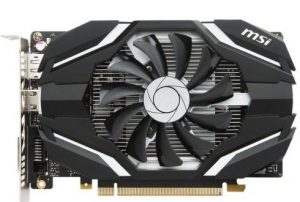
The GP107 also brings changes in the organization of the different execution blocks. If there are still GPC blocks – there are two in this case – they no longer contain 5 SM type sub-blocks, but only 3. On the other hand, each SM block still contains 128 units of calculation and 8 units dedicated to textures.
The GeForce GTX 950 and its GM206 GPU.
In the end, this brings us to a chip made up of 768 computing units and 48 units dedicated to textures, to which are added 32 rendering units. An identical configuration to that of the GeForce GTX 950 and its GM206 GPU.
On the other hand, the change of fineness of engraving – the GTX 9 are engraved in 28 nm – makes it possible to increase the operating frequency. With its GTX 10 series, Nvidia has accustomed us to increasing the frequency of its GPUs by plus or minus 500 MHz compared to the replaced models.
It is a little less in this case, since it is a question of 1290 MHz for the base frequency and 1392 MHz for the average GPU Boost frequency, that is to say respective increases of 266 and 204 MHz.
Testing
Some savvy readers might see here a sign that the 14nm FinFET etching process is less conducive to high frequencies than TSMC’s 16nm. This would then sound like an echo to the lower frequencies of the AMD Polaris cards (RX 400).
On the other hand. We can also simply see it as a simple brake on the brakes given by Nvidia so as to be able to offer cards consuming less than 75 watts – the announced TDP – and therefore not requiring an external power connector.
We will therefore have to wait for the test of models equipped with an additional PCIe connector to see if the 14 nm allows megahertz surges. On the memory side, we also remain on the classic for the entry level. The memory bus is thus 128 bits while the frequency is 1752 MHz. Obviously, the memory in question is GDDR5 type and displays 4 GB on the meter.
No reference model will be offered for sale – at least that’s what Nvidia says at the time of this writing – and manufacturers can therefore give free rein to their imagination to offer more or less successful custom models.
For our tests, we were able to cut our teeth on an Asus GeForce GTX 1050 Ti Expedition and a KFA² GeForce GTX 1050 Ti OC. In both cases, the cooling system is sketchy with an extruded aluminum radiator and one or two entry-level fans.
This does not prevent these two models from being particularly discreet in games, the Asus model being very difficult to hear. At rest, some manufacturers such as Asus offer the complete shutdown of the fans. At this noise level, stopping is virtually indistinguishable, but it does increase the life of the fans.
Power Consumption Nvidia GeForce GTX 1050
Power consumption is low on this model, very low even since Nvidia has quite simply managed to halve it compared to the GeForce GTX 960. We even gain 20 to 25 watts compared to a custom GeForce GTX 950. With around sixty watts on average for the card alone, the GeForce GTX 1050 Ti even consumes less energy than AMD’s Radeon RX 460 .
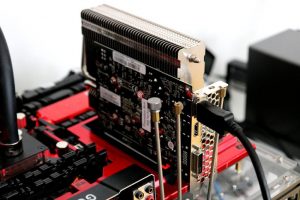
Unsurprisingly, energy efficiency is there and shines at a very high level. This is without comparison with what AMD offers opposite, both with its Radeon RX 460 and its Radeon RX 470 .
Performance Nvidia GeForce GTX 1050 for games
As we mentioned above, we were unable to test a reference model. On the other hand, the Asus Expedition model received is not an overclocked model. This one sees its practical frequency oscillating between 1493 and 1595 MHz after almost an hour of non-stop play.
The KFA² OC model is between 1531 and 1645 MHz, but it is a slightly overclocked model. It is, in any case, well above what AMD offers on its RX 460 (approximately 1,135 MHz).
Games is such that the GeForce GTX 1050 Ti
The behavior in games is such that the GeForce GTX 1050 Ti is positioned halfway between a Radeon RX 460 and a Radeon RX 470, while being slightly closer to the latter. Nvidia’s card thus shows an average advantage of 47% over the RX 460 while the RX 470 is ahead of it by 34%.
The GeForce GTX 950 is for its part ahead of about twenty percent while a GTX 960 not overclocked is exceeded by almost 10%. The superior model, the GeForce GTX 1060, however, remains in another dimension and displays an average advance of 66%. The 1050 Ti nevertheless allows you to play correctly in Full HD. Sometimes making some compromises on some fairly greedy titles.
The final word for the GeForce GTX 1050 Ti
Announced at 155 €, the GeForce GTX 1050 Ti is a rather interesting solution for the gamer equipped with a Full HD or lower definition monitor. The pricing is also fairly well studied, since it allows you to position yourself right between the RX 460 and RX 470 from AMD, like its performance in games.
It will nevertheless be necessary to see if this call rate will be respected or if Nvidia’s partners will rather be tempted to offer custom models. overclocked at prices around 200 €.
Because at this price, this model would really lose its interest. On the other hand, we like the rest of the GTX 10 series, the very low power consumption. This point allows Nvidia partners to offer models with extremely quiet operation. Which will also delight people who want to use it in an HCPC. In addition, Nvidia’s fairly complete software ecosystem is still there, with increasing possibilities over the months.
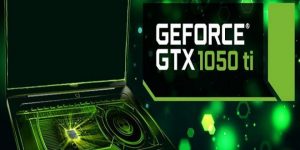
Most of Nvidia’s partners
Nvidia’s partners offer cards in an ultra-short format, but equipped with “double slot” type cooling systems. Most cards without overclocking or lightly overclocking do not have an external power connector. While the “big” models accommodate a 6-pin PCIe connector.
What to propose overclockings allowing to display more than 1,500 MHz in GPU Boost frequency. Our two test boards (Asus Expedition and KFA² OC) showed moderate coilwhine.
On the video output side, most of the cards seem to have an HDMI 2.0b, a DisplayPort 1.3 / 1.4 and a DVI. However, some models offer up to five outputs. The video engine also speeds up the decoding and encoding of Full HD and 4K / UHD videos, whether encoded in H.264 or HEVC.
For 4K / HEVC playback, support extends up to 120Hz in 10 or 12 bit. Decoding of 8K videos at 30 Hz is also part of the game, with a maximum bit rate of 320 Mb / s. 4K / HEVC encoding is also valid up to 60 Hz in 10 bits. By the way, HDR is supported, including in games.
Finally
Finally, as always, we find the Nvidia software ecosystem built around the GeForce Experience software. This allows you to optimize the graphics settings of games on the fly in order to offer the best compromise between details and frame rate.
This utility also allows you to update the driver, easily record your gameplay in the form of videos or even broadcast them on Twitch. It will also offer to take next-generation screenshots with the Ansel tool.
STRONG POINTS
- Energetic efficiency.
- Low power consumption, which makes it possible to obtain very quiet models.
- HDMI 2.0b and DP 1.4 “ready”.
- Nvidia software ecosystem.
WEAK POINTS
- Nothing special.
CONCLUSION
An entry-level model that fulfills its role by offering a convincing solution for playing on a Full HD (or lower definition) monitor. Certainly, it will be necessary to make some compromises on the graphic effects of the heaviest titles. But this is not systematic, most of the games can be launched in high quality.
